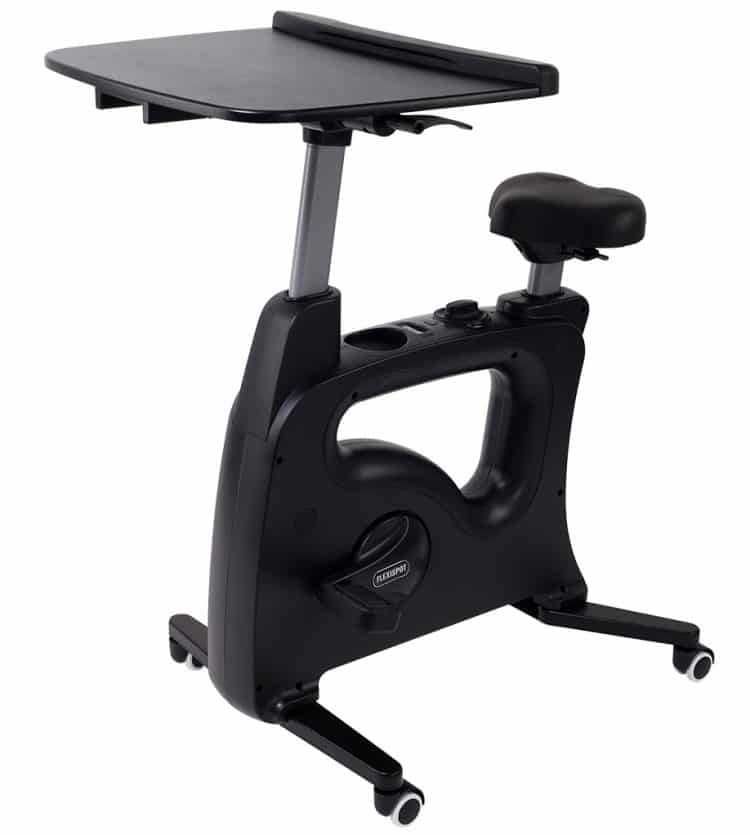Sitting is a very passive activity. When you sit, your chair takes the strain, and you need very little muscle activity to keep you in place. As a result, sitting burns very few calories. Unfortunately, sitting is also hard to avoid, especially if you have an office job or do a lot of driving. Most people also spend much of their leisure time sitting.
In contrast, standing involves more muscle tension and, therefore, burns more calories.
How many more? Good question!
Use our sitting vs. standing calories burned calculator to see how many extra calories you can burn simply by spending more time on your feet.
Sitting vs. Standing Calculator
[sc name=”svs-cal”][/sc]
What Is the Sitting vs. Standing Calories Burned Calculator?
Most people spend much of their time sitting. This may be because they have an office job, drive a lot, or enjoy spending their leisure time sitting on a sofa watching TV. As a result, even regular exercisers are often classed as sedentary because they do far more sitting than standing and moving.
Given that there are 168 hours in a week, even if you work out for one hour six days out of seven but then spend the rest of your time physically inactive, you are actually sedentary for over 95% of the time.
Chronic sedentarism is strongly linked to a host of medical conditions and diseases, including (1):
- Colorectal cancer
- Coronary heart disease
- Deep vein thrombosis
- Depression and mental health issues
- Diabetes
- High blood pressure
- Neck and back pain
- Poor posture
- Strokes
- Varicose veins
- Weight gain and obesity
Prolonged sitting also has an adverse effect on your Total Daily Energy Expenditure, or TDEE for short. Sitting is a energy-efficient activity that burns very few calories. As such, if you spend a lot of time sitting, you may gain weight easily or have a hard time losing fat.
Our sitting vs. standing calories burned calculator reveals how many calories you burn while seated vs. standing. Knowing how few calories you burn while sitting and how many more you can burn by standing could be the incentive you need to be more active and less chair bound.
How Does the Sitting vs. Standing Calories Burned Calculator Work?
Our sitting vs. standing calories burned calculator uses four equations to estimate how many calories you burn while sitting compared to standing. They take into account your gender, height, weight, and age to estimate your calorie expenditure during these two very different activities.
The calculations are based on the Harris-Benedict formula for estimating Basal Metabolic Rate (BMR). Your BMR is then adjusted according to how much time you spend sitting or standing.
The equations are:
- Men Sitting = 1.2 x (66 + (6.23 x weight) + (12.7 x height) – (6.8 x age)
- Men Standing = 2 x (66 + (6.23 x weight) + (12.7 x height) – (6.8 x age)
- Women Sitting = 1.2 x (655 + (4.35 x weight) + (4.7 x height) – (4.7 x age)
- Women Standing = 2 x (655 + (4.35 x weight) + (4.7 x height) – (4.7 x age)
Thankfully, there is no need to break out your pencil and paper to work these things out for yourself – just use our sitting vs. standing calories burned calculator!
[sc name=”style-blue-box” ]
Related:
- Calories Burned Standing Calculator
- Calories Burned Sitting Calculator
- Calories Burned Walking Calculator
- Calories Burned Running Calculator
[/sc]
How to Use the Sitting Vs. Standing Calories Burned Calculator
Our sitting vs. standing calories burned calculator is very straightforward to use. Just follow these step-by-step instructions:
- Choose between imperial (pounds, feet, inches) and metric (kilograms, meters, and centimeters).
- Select your gender.
- Enter your weight.
- Enter your height.
- Enter your age in years.
- Select how many days per week you work.
- Enter how many hours per day you spend sitting.
- Enter how many hours a day you spend standing.
- Hit “Calculate“.
Interpreting your Results
Once the calculator has worked its magic, you will be rewarded with the following information:
- How many calories you burn per day
- How many calories you burn per week
- How many calories you burn per month
- The number of calories you burn per hour while standing
- The number of calories you burn per hour while sitting
- The number of days and hours per month you spend working
The main thing to note is the difference between calories burned standing vs. calories burned while sitting.
As you’ll see, your energy expenditure is significantly lower when sitting. Needless to say, spending so much time sitting will have a big impact on your daily calorie expenditure.
How to Sit Less and Stand More to Burn More Calories
It’s clear that sitting uses fewer calories than standing. Prolonged sitting is also bad for your health. In fact, some medical professionals have gone so far as to call sitting the “new smoking” as they believe it’s THAT bad for you!
Sitting less and standing and moving more could help make losing weight easier and even stop you from gaining weight in the first place. More standing and less sitting are also good for your posture, spinal health, and your state of mind.
But how can you sit less and stand more if you have an office job? Here are a few tried and tested strategies:
1. Stand up for five minutes every hour
Set the alarm on your watch or phone to remind you to stand up for five minutes every hour. Assuming you work an eight-hour day, this adds up to an extra 40 minutes on your feet. That might not sound like a lot, but over a week, that’s over three hours less sitting.

2. Take regular walks to the water cooler
Everyone knows that hydration is important for health. Rather than keep a water bottle on your desk, take a quick walk to the water cooler every hour or so. Not only will this break up periods of prolonged sitting, but it will also help you accumulate more steps per day. And don’t just walk to the nearest water cooler – go to the one furthest from your desk and even on another floor.
3. Stand up to make and receive phone calls
A lot of great world leaders believe in standing for phone calls. They think it makes for a more authoritative tone of voice. It certainly helps you focus more on the conversation you’re having. Also, your phone can act as a reminder to stand up more. For example, if you conduct a lot of business over the phone, this could mean you spend several hours per day standing instead of sitting.
4. Use the “Pomodoro Method”
The Pomodoro Method is a productivity and focus tool that is tailor-made to help you stand more and sit less. It’s very simple and may even make you more effective at your job.
- Set a timer for 25-minutes.
- Work until the time is up.
- Rest for 5-minutes (stand up, walk, get some water, etc.)
- Start your next 25-minute work period.
- Complete four 25-minute work periods and then take a 15 to 30-minute break.
- Start your next block of four 25-minute work/5-minute rest periods.
Your boss may wonder why you’re wandering around the office every 25-minutes, but this method has been shown to be an effective way to increase focus and workplace productivity (2). It’s also suitable for students and studying.
5. Speak in person instead of email or call your colleagues
Need to ask someone in accounts a question? Don’t email or phone them; get off your butt and go and see them! Communicating with colleagues is the perfect excuse for sitting less and standing and walking more. It’s also a good way to build better relationships with your coworkers.
6. Try a standing desk
Standing desks are taller than regular desks. Many are adjustable, so you can easily alternate between sitting and standing. If you can, try working while standing instead of sitting.

Don’t stand all day, as that can be tiring, especially if you are not used to it. Instead, begin with short periods of standing alternated with longer periods of sitting, e.g., 15 minutes and 45 minutes. Then, as you become more accustomed to standing, you can spend more time working on your feet.
No standing desk? No problem! You can get a similar effect by placing your chair on your desk and your laptop on your chair. This should be roughly the right height for working while standing. However, some adjustments may be necessary to get your screen into a comfortable position.
[sc name=”style-blue-box2″ ]
Related: FlexiSpot Deskcise Pro V9 Desk Bike Review.
[/sc]
7. Try a walking desk
Walking desks are standing desks with a treadmill placed in beneath them. With a walking desk, you walk at a slow speed while making calls or using your computer. Some may find walking a distraction, but a lot of people enjoy it. Try it with less involving tasks first to see how walking while working affects your accuracy and productivity.
8. Have walking meetings
Meetings are a common part of office life. In most cases, meetings take place in offices or boardrooms, which means yet more sitting.
Spend less time sitting by having a walking meeting. Find some open space, such as a nearby park, and walk as a group instead of sitting around a table. Use a voice recorder to take the minutes of the meeting. Walking can increase creativity and problem solving, making your meetings more productive.
9. Walk during coffee and lunch breaks
Sitting for lunch and coffee breaks adds to your daily quota of chair time. Even if you spend most of your day sitting, you can still get more time on your feet by going for a 10 to 15-minute walk during coffee breaks and a 30 to 60-minute walk at lunchtime. Using this strategy, you should easily be able to accumulate 8,000-10,000 steps per day. Use an activity tracker to count your steps.
10. Seek out opportunities for NEAT
NEAT stands for Non-Exercise Activity Thermogenesis. Also known as NEPA, or Non-Exercise Physical Activity, this is any movement that cannot be described as a workout. Walking is an obvious example of NEAT, as is climbing stairs, doing gardening, playing with your kids, doing chores at home, etc.
While NEAT may not be possible at work, you should still look for NEAT opportunities outside of work hours to mitigate the effects of all that time you spend sitting. If nothing else, try parking your car a mile or so from work to ensure that you do at least a couple of miles of walking every day.
Sitting vs. Standing – Wrapping Up
Modern life has become very sedentary. Labor-saving devices, passive entertainment, mechanized transport, and technology in general mean that it’s entirely possible to go all day without doing anything physical. Even an hour of exercise per day cannot offset the risks of an otherwise sedentary lifestyle.
The more you sit, the fewer calories you burn per day, and the harder it is to control or lose weight.
Use our sitting vs. standing calories burned calculator to see just how much time you spend sitting and how few calories you burn while doing it. Then, see how many more calories you’d burn if you spent more time standing.
Use this information to motivate you to sit less and stand and move more. Your body will thank you!
References:
1– Yale Medicine: Why Is Sitting So Bad for Us? https://www.yalemedicine.org/news/sitting-health-risks
2– National Institute of Child Health and Human Development: The Pomodoro Technique – An Effective Time Management Tool https://science.nichd.nih.gov/


